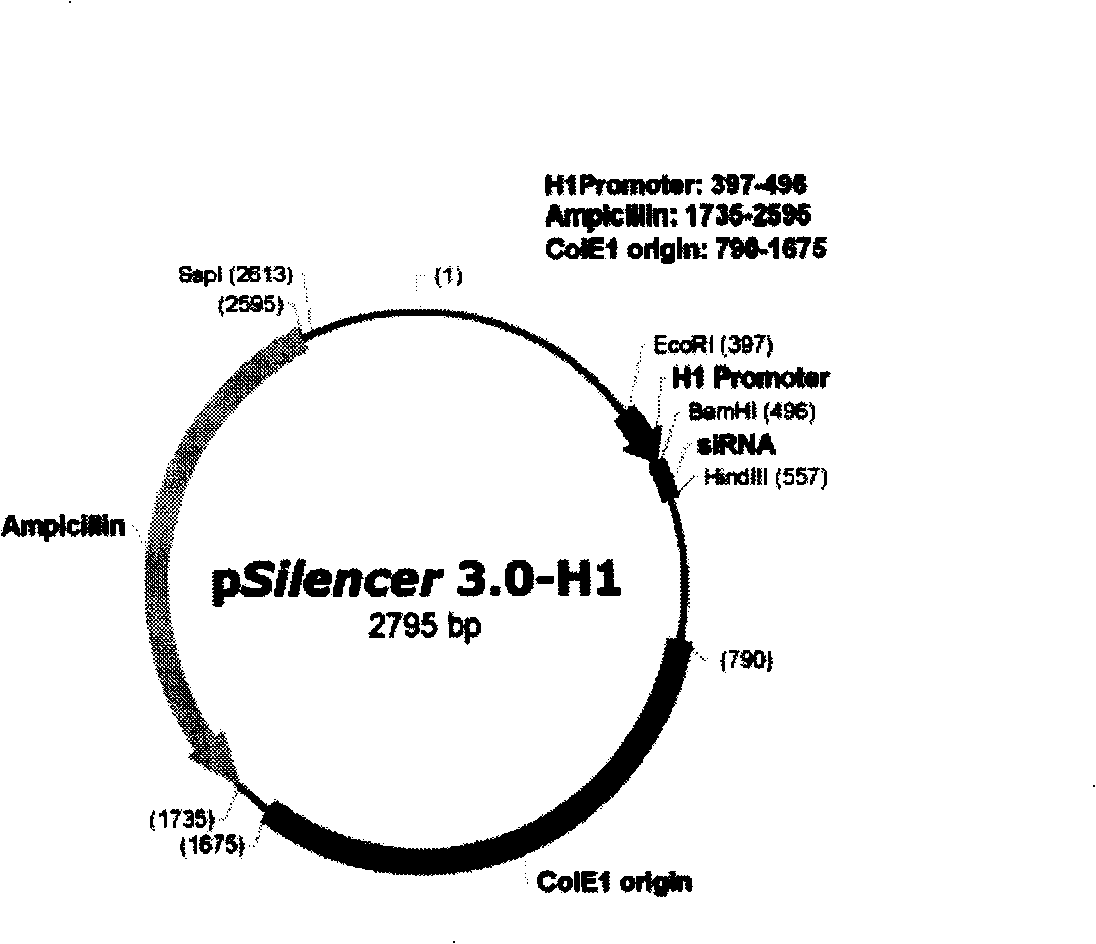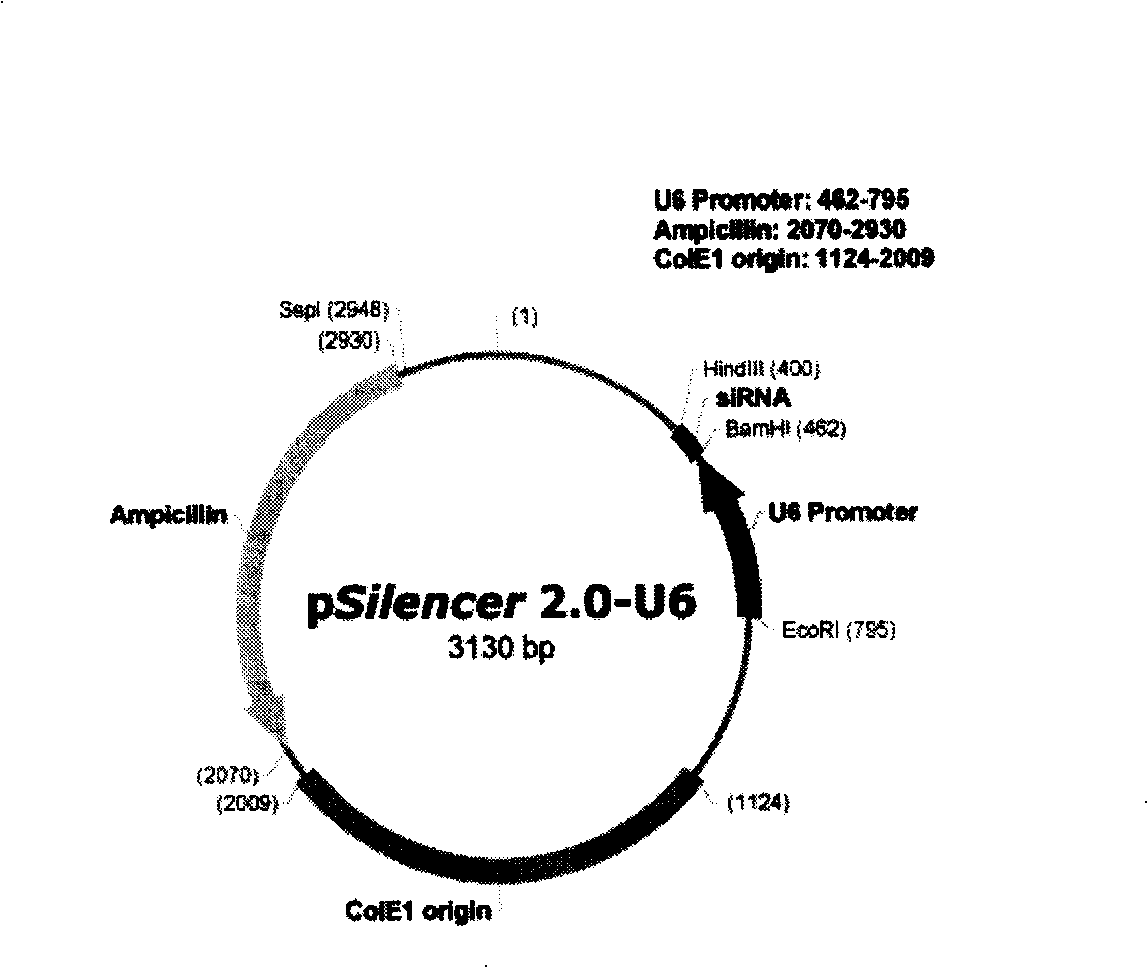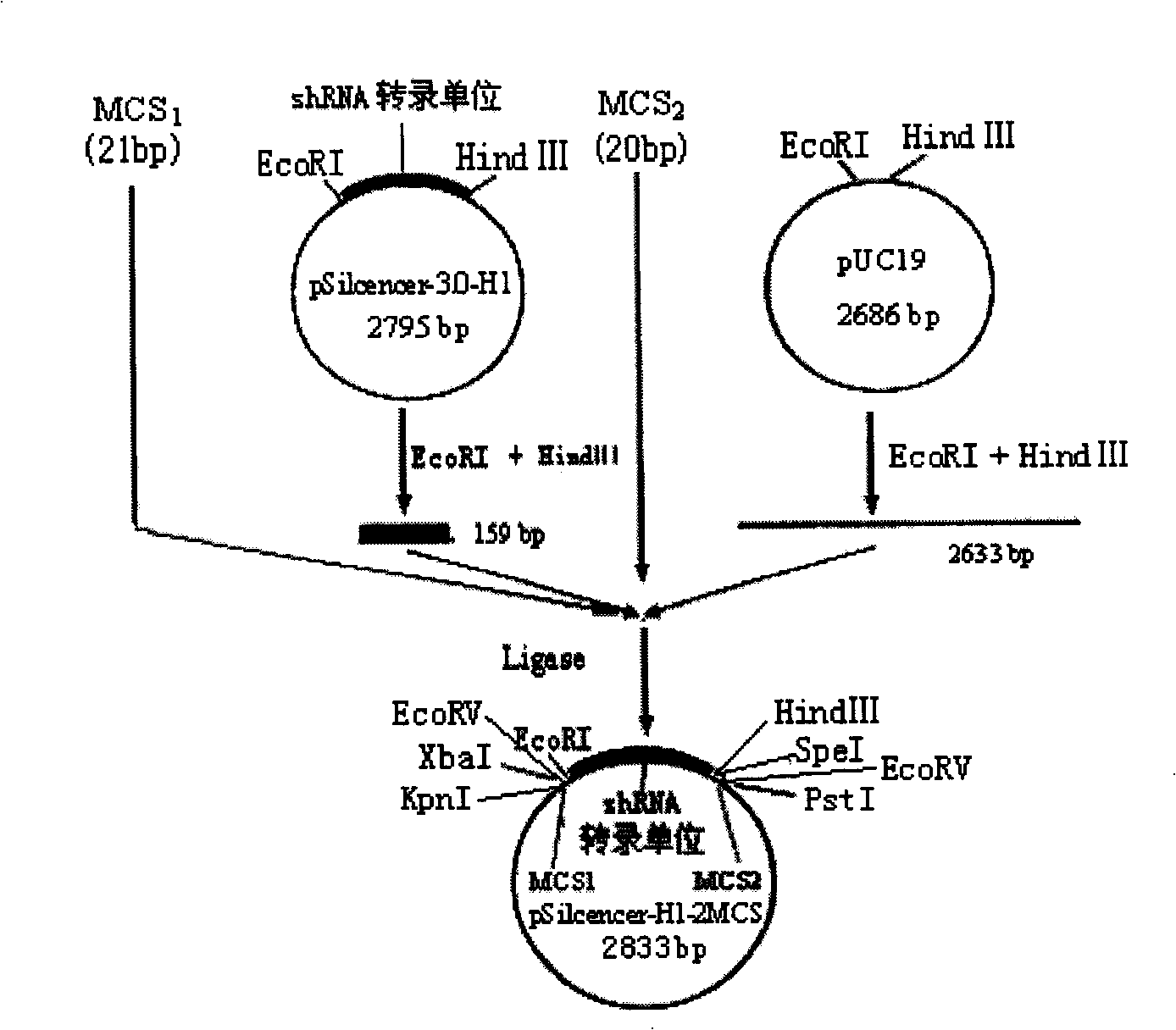Polygene interferential shRNA plasmid expression vector, construction method and application
A vector and plasmid technology, which is applied in gene therapy, recombinant DNA technology, and the introduction of foreign genetic material using vectors, etc., can solve the problems of cumbersome directional connection, strong inhibitory effect on target gene expression, and inferior expression of shRNA/siRNA, etc., to achieve Easy to operate, expensive, stable effect
- Summary
- Abstract
- Description
- Claims
- Application Information
AI Technical Summary
Problems solved by technology
Method used
Image
Examples
Embodiment 1
[0048] Example 1: Construction of shRNA plasmid expression vector pSilencer-U6 / H1-(shRNA)n based on polygenic interference
[0049] In order to realize the concatenation of multiple shRNA transcription units on a single vector, it is necessary to design and introduce two sets of multiple cloning sites on both sides of the shRNA transcription units of the initial vector pSilencer2.0-U6 or pSilencer3.0-H1 (purchased from Ambion) Sequence (MCS), make the two sets of multiple cloning site sequences and shRNA transcription unit, plasmid sequence orderly combined, construct two sets of multiple cloning site sequences (MCS 1 and MC s ) between the base vector pSilencer-U6 / H1-2MCS with multiple shRNA transcription units connected in series. Afterwards, the coding sequences of multiple target gene interference shRNA transcription units are serially inserted between the two MCSs of the pSilencer-U6 / H1-2MCS vector.
[0050] 1. Construction of pSilcencer-U6 / H1-2MCS basic plasmid vector ...
Embodiment 2
[0078] Example 2: Construction of shRNA plasmid expression vector pSilencer-U6 / H1-HIV-(shRNA)n based on HIV polygenic interference
[0079] 1. Construction of pSilcencer-U6 / H1-HIV-2MCS basic plasmid vector
[0080] Method according to Example 1.
[0081] 2. Selection and design of shRNA target sequences
[0082] The selection of HIV-1 env, gag, pol, vif gene shRNA target sequences mainly follows the Tushl principle and refers to some other standards. After the target sequence is selected, Blast search is carried out so that the target sequence has no homology with other genes.
[0083] After the target sequence is determined, the shRNA template DNA of each target sequence is synthesized according to the rules (see Thijn R. Brummelkamp, et al. Science, 2002, 296: 550-553). Each shRNA template DNA includes sense and antisense two complementary short DNA single strands, and its basic units are: BamHI site, target sequence sense strand, 9bp loop sequence, target sequence anti...
Embodiment 3
[0129] Example 3: Application of the shRNA plasmid expression vector of HIV polygene interference in the preparation of AIDS treatment drugs
[0130] The shRNA plasmid expression vector pSilencer-U6 / H1-HIV-(shRNA)n constructed above was transformed into Escherichia coli, and the Escherichia coli was used for high-density fermentation (in a fermenter), the cells were collected by centrifugation, and pSilencer was extracted and purified according to the conventional plasmid extraction method -U6 / H1-HIV-(shRNA)n plasmid, measure OD 260 Plasmid concentration, sequencing to identify the correctness of the product. The pure grains are prepared into injections or oral capsules, which can be used for the treatment of HIV-infected and AIDS patients. Plasmid expression vectors can transcribe and synthesize corresponding shRNAs targeting HIV-1env, gag, pol, and vif genes in human cells. mRNA degradation, thereby inhibiting the expression of multiple HIV genes and killing HIV.
PUM
 Login to View More
Login to View More Abstract
Description
Claims
Application Information
 Login to View More
Login to View More - R&D
- Intellectual Property
- Life Sciences
- Materials
- Tech Scout
- Unparalleled Data Quality
- Higher Quality Content
- 60% Fewer Hallucinations
Browse by: Latest US Patents, China's latest patents, Technical Efficacy Thesaurus, Application Domain, Technology Topic, Popular Technical Reports.
© 2025 PatSnap. All rights reserved.Legal|Privacy policy|Modern Slavery Act Transparency Statement|Sitemap|About US| Contact US: help@patsnap.com



